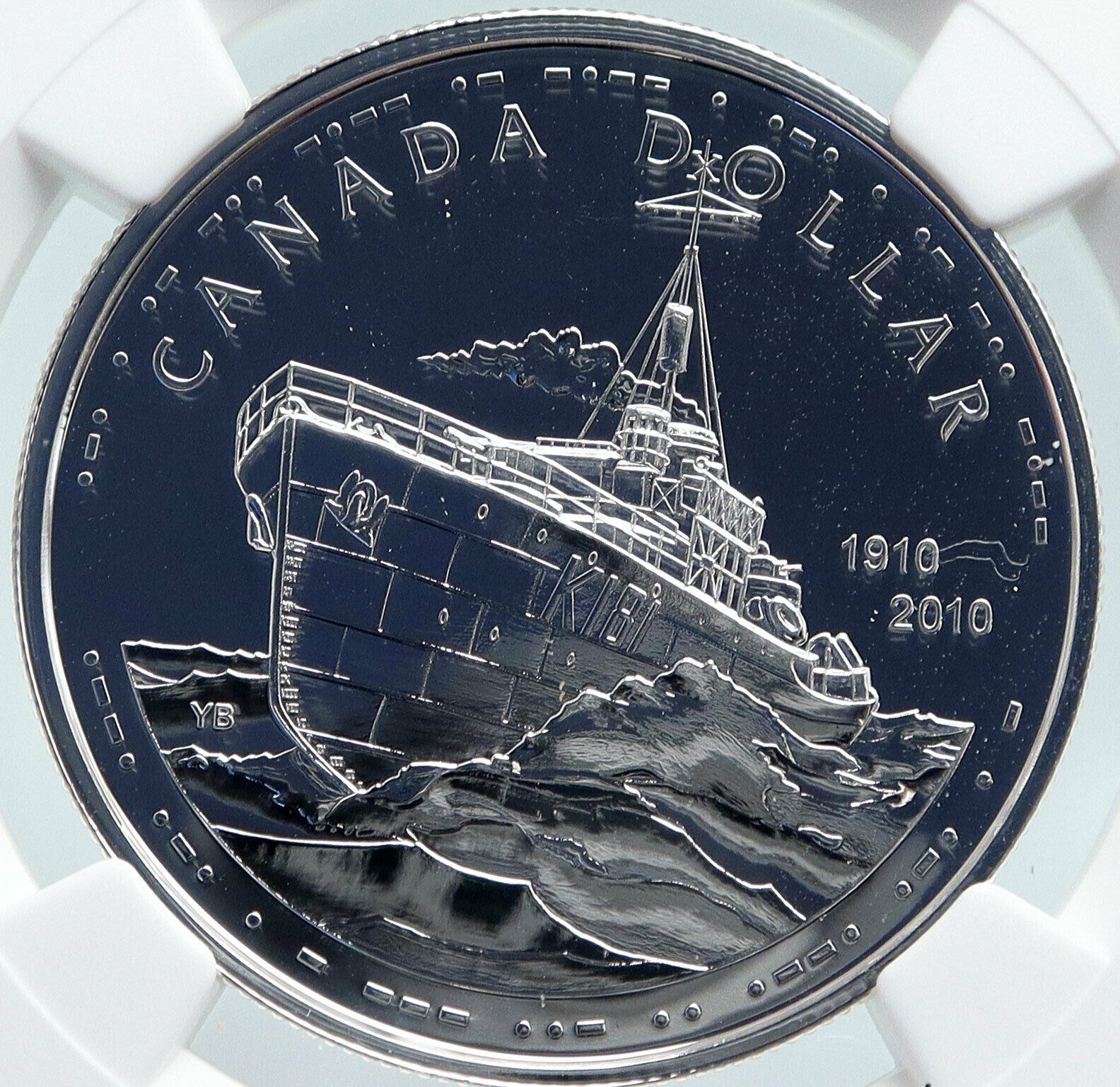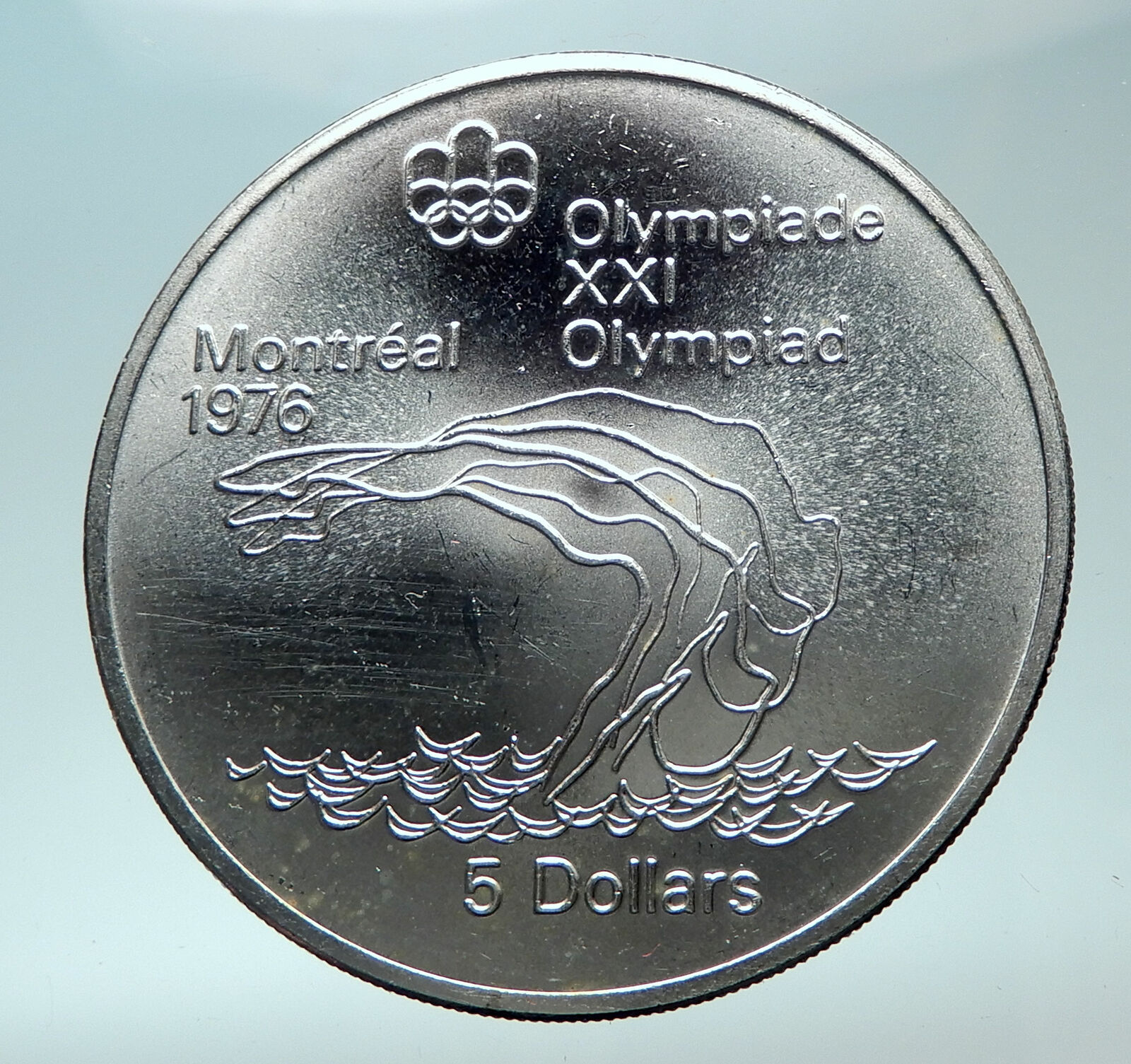|
Canada
1852 Bronze Half-Penny Token 27mm (9.59 grams)
Reference: CCT# PC-3, Breton# 529, KM# Tn20
PROVINCE DU CANADA UN SOU, Canadian Habitant standing in traditional winter costume.
QUEBEC BANK TOKEN 1852 HALF PENNY, Seated female figure of Commerce with cornucopia facing right. Cliff in background with fort flying flag. To her left, a beehive. To her right a sailing ship and a beaver. Shield with lion in foreground.
Coin Notes:
The Bank of Upper Canada had agreed to land some of its copper coinage of 1850 at Quebec, but it was late and in insufficient amount. This Quebec Bank’s third request was granted and the tokens were struck by Ralph Heaton & Co. but it is not known whom cut the dies.
Minor variations exit. Proofs exist.
You are bidding on the exact item pictured, provided with a Certificate of Authenticity and Lifetime Guarantee of Authenticity.
Quebec Bank was founded on June 9, 1818 to meet a perceived need by some merchants and residents of Quebec City. They wanted an alternative to the newly founded Bank of Montreal which they felt was inadequate for the needs of the province.
The bank was incorporated in 1822 in Quebec City and made good progress until the great revulsion of 1826-7. The first president was John William Woolsey. Robert Henry Bethune was part of the banks organization from 1864 -1870 during a time when Quebec Bank was changing the way Canadian banks lent money. The bank was predominantly in Quebec and to a lesser extent in Ontario with a few branches in western Canada when it was absorbed by the Royal Bank of Canada in 1917. The integration of the Quebec Bank into the Royal Bank was made effective January 1, 1918, adding 20 million dollars to the assets of the Royal Bank.
A small reminder of the banks existence is the Quebec Bank Building in Montreal with its name carved over the entrance. On July 27, 2018, The Quebec Bank branch in Toronto, located at 50 King Street East, was designated under Part IV of the Ontario Heritage Act as being of cultural heritage value or interest.
.svg/220px-Canada_(orthographic_projection).svg.png)  Canada is a country, consisting of ten provinces and three territories, in the northern part of the continent of North America. It extends from the Atlantic to the Pacific and northward into the Arctic Ocean, covering 9.98 million square kilometres (3.85 million square miles) in total, making it the world’s second-largest country by total area and the fourth-largest country by land area. Canada’s common border with the United States forms the world’s longest land border. Canada is sparsely populated overall, the majority of its land territory being dominated by forest and tundra as well as the mountain range of the Rocky Mountains; about four-fifths of the population live near to the southern border. The majority of Canada has a cold or severely cold winter climate, but southerly areas are warm in summer. Canada is a country, consisting of ten provinces and three territories, in the northern part of the continent of North America. It extends from the Atlantic to the Pacific and northward into the Arctic Ocean, covering 9.98 million square kilometres (3.85 million square miles) in total, making it the world’s second-largest country by total area and the fourth-largest country by land area. Canada’s common border with the United States forms the world’s longest land border. Canada is sparsely populated overall, the majority of its land territory being dominated by forest and tundra as well as the mountain range of the Rocky Mountains; about four-fifths of the population live near to the southern border. The majority of Canada has a cold or severely cold winter climate, but southerly areas are warm in summer.
The land now called Canada has been inhabited for millennia by various Aboriginal peoples. Beginning in the late 15th century, British and French colonies were established on the region’s Atlantic coast. As a consequence of various conflicts, the United Kingdom gained and lost North American territories until left, in the late 18th century, with what mostly comprises Canada today. Pursuant to the British North America Act, on July 1, 1867, three colonies joined to form the autonomous federal Dominion of Canada. This began an accretion of provinces and territories to the new self-governing Dominion. In 1931, Britain granted Canada near total independence with the Statute of Westminster 1931 and full sovereignty was attained when the Canada Act 1982 severed the vestiges of legal dependence on the British parliament.
Canada is a federal parliamentary democracy and a constitutional monarchy, Queen Elizabeth II being the current head of state. The country is officially bilingual at the federal level. It is one of the world’s most ethnically diverse and multicultural nations, the product of large-scale immigration from many countries, with a population of approximately 35 million as of 2015. Its advanced economy is the eleventh largest in the world, relying chiefly upon its abundant natural resources and well-developed international trade networks. Canada’s long and complex relationship with the United States has had a significant impact on its economy and culture.
Canada is a developed country and one of the wealthiest in the world, with the tenth highest nominal per capita income globally, and the eighth highest ranking in the Human Development Index. It ranks among the highest in international measurements of government transparency, civil liberties, quality of life, economic freedom, and education. Canada is a Commonwealth Realm member of the Commonwealth of Nations, a member of the Francophonie, and part of several major international and intergovernmental institutions or groupings including the North Atlantic Treaty Organization, the G8, the Group of Ten, the G20, the North American Free Trade Agreement and the Asia-Pacific Economic Cooperation forum.
|





.svg/220px-Canada_(orthographic_projection).svg.png)
 Canada is a country, consisting of ten provinces and three territories, in the northern part of the continent of North America. It extends from the Atlantic to the Pacific and northward into the Arctic Ocean, covering 9.98 million square kilometres (3.85 million square miles) in total, making it the world’s second-largest country by total area and the fourth-largest country by land area. Canada’s common border with the United States forms the world’s longest land border. Canada is sparsely populated overall, the majority of its land territory being dominated by forest and tundra as well as the mountain range of the Rocky Mountains; about four-fifths of the population live near to the southern border. The majority of Canada has a cold or severely cold winter climate, but southerly areas are warm in summer.
Canada is a country, consisting of ten provinces and three territories, in the northern part of the continent of North America. It extends from the Atlantic to the Pacific and northward into the Arctic Ocean, covering 9.98 million square kilometres (3.85 million square miles) in total, making it the world’s second-largest country by total area and the fourth-largest country by land area. Canada’s common border with the United States forms the world’s longest land border. Canada is sparsely populated overall, the majority of its land territory being dominated by forest and tundra as well as the mountain range of the Rocky Mountains; about four-fifths of the population live near to the southern border. The majority of Canada has a cold or severely cold winter climate, but southerly areas are warm in summer.




